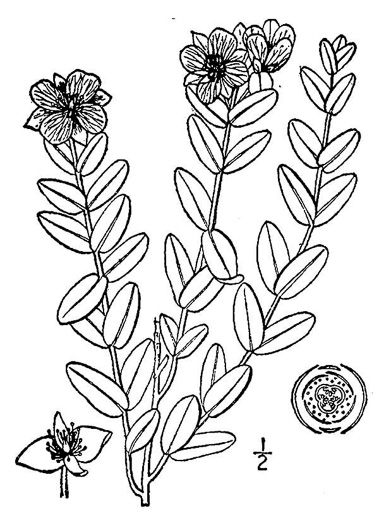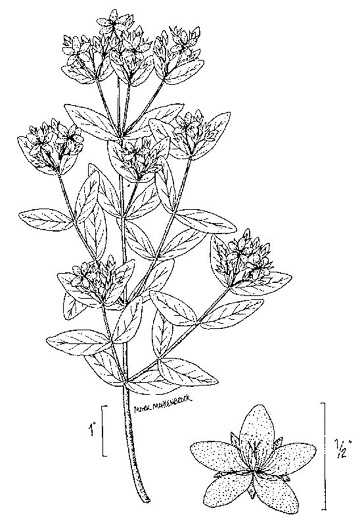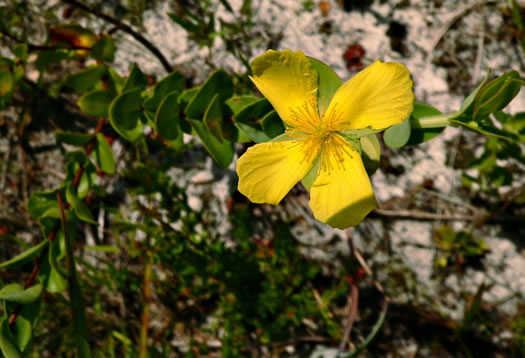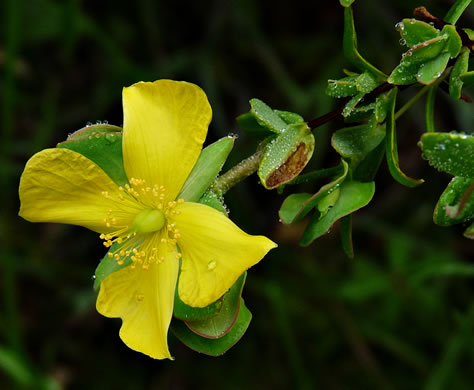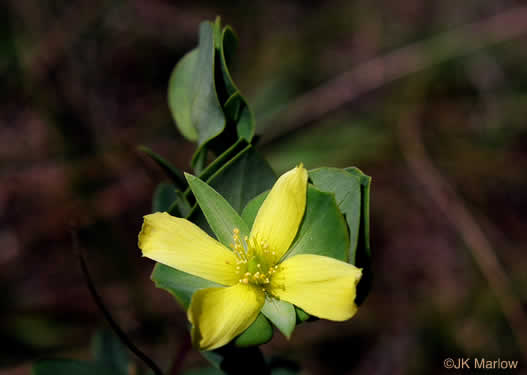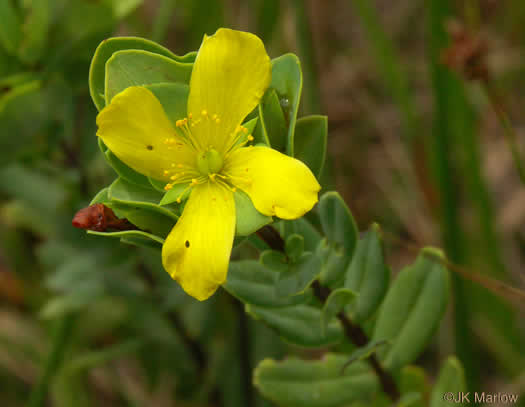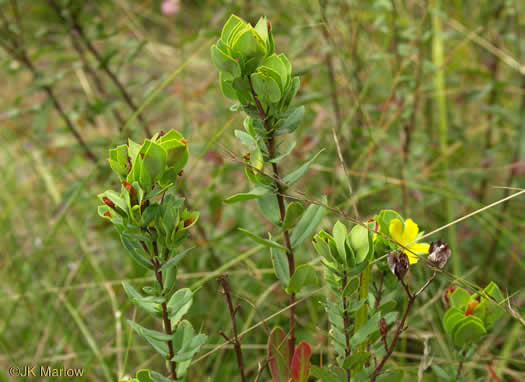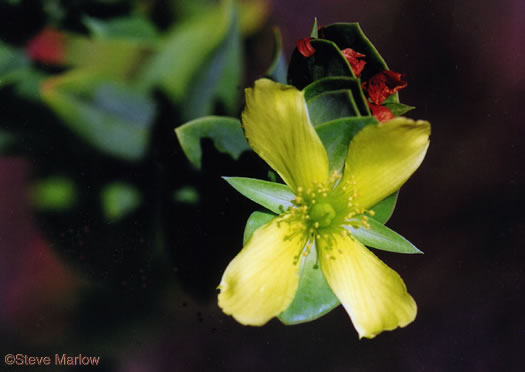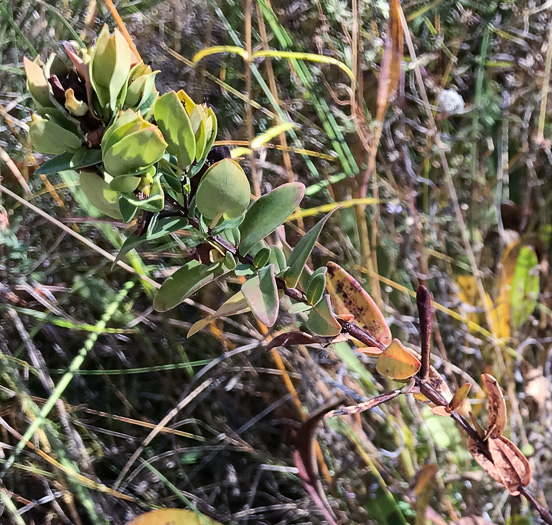Spermatophytes (seed plants): Angiosperms (flowering plants): Eudicots: Core Eudicots: Rosids: Fabids: Malpighiales
WEAKLEY'S FLORA OF THE SOUTHEASTERN US (4/24/22):
Hypericum crux-andreae
FAMILY
Hypericaceae
Go to FSUS key
Dig deeper at SERNEC, a consortium of southeastern herbaria.
Read more about St. Peter's-wort at Vascular Plants of North Carolina.
SYNONYMOUS WITH
PLANTS NATIONAL DATABASE:
Hypericum crux-andreae
FAMILY
Clusiaceae
SYNONYMOUS WITH Flora of North America
Hypericum crux-andreae
SYNONYMOUS WITH VASCULAR FLORA OF THE CAROLINAS (Radford, Ahles, & Bell, 1968) 126-01-004:
Hypericum stans FAMILY Hypericaceae
INCLUDING Manual of the Southeastern Flora (Small, 1933, 1938)
Ascyrum cuneifolium
INCLUDING Manual of the Southeastern Flora (Small, 1933, 1938)
Ascyrum stans
COMMON NAME:
St. Peter's-wort, St. Andrew's Cross, St. Peter's Cross
To see larger pictures, click or hover over the thumbnails.
JK Marlow jkm0509c_13
September Transylvania County NC
DuPont State Forest
Four unequal sepals: the 2 outer and larger enclosing 2 much narrower inner, per Wildflowers of the Carolina Lowcountry (Porcher, 1995).
JK Marlow jkm060903_010
September Transylvania County NC
DuPont State Forest
Leaves elliptic-oblong, rounded at the tip, clasping at the base, per Wildflowers of Tennessee (Carman, 2005).
Steve Marlow snm097309_12
September Transylvania County NC
DuPont State Forest
Outer sepals cordate or ovate, inner sepals lanceolate, per Vascular Flora of the Carolinas (Radford, Ahles, & Bell, 1968).
WEAKLEY'S FLORA OF THE SOUTHEASTERN US (4/24/22):
Hypericum crux-andreae
FAMILY
Hypericaceae
SYNONYMOUS WITH
PLANTS NATIONAL DATABASE:
Hypericum crux-andreae
FAMILY
Clusiaceae
SYNONYMOUS WITH
Flora of North America
Hypericum crux-andreae
SYNONYMOUS WITH
VASCULAR FLORA OF THE CAROLINAS (Radford, Ahles, & Bell, 1968) 126-01-004:
Hypericum stans
FAMILY
Hypericaceae
INCLUDING
Manual of the Southeastern Flora (Small, 1933, 1938)
Ascyrum cuneifolium
INCLUDING
Manual of the Southeastern Flora (Small, 1933, 1938)
Ascyrum stans
If a search such as "Carex leptalea var. leptalea" doesn't deliver the results you want, try "Carex leptalea".
Or, to minimize chances of a misspelling, try just "Carex le".
Less is more: If "pencil flower" doesn't deliver the results you want, try "pencil".

